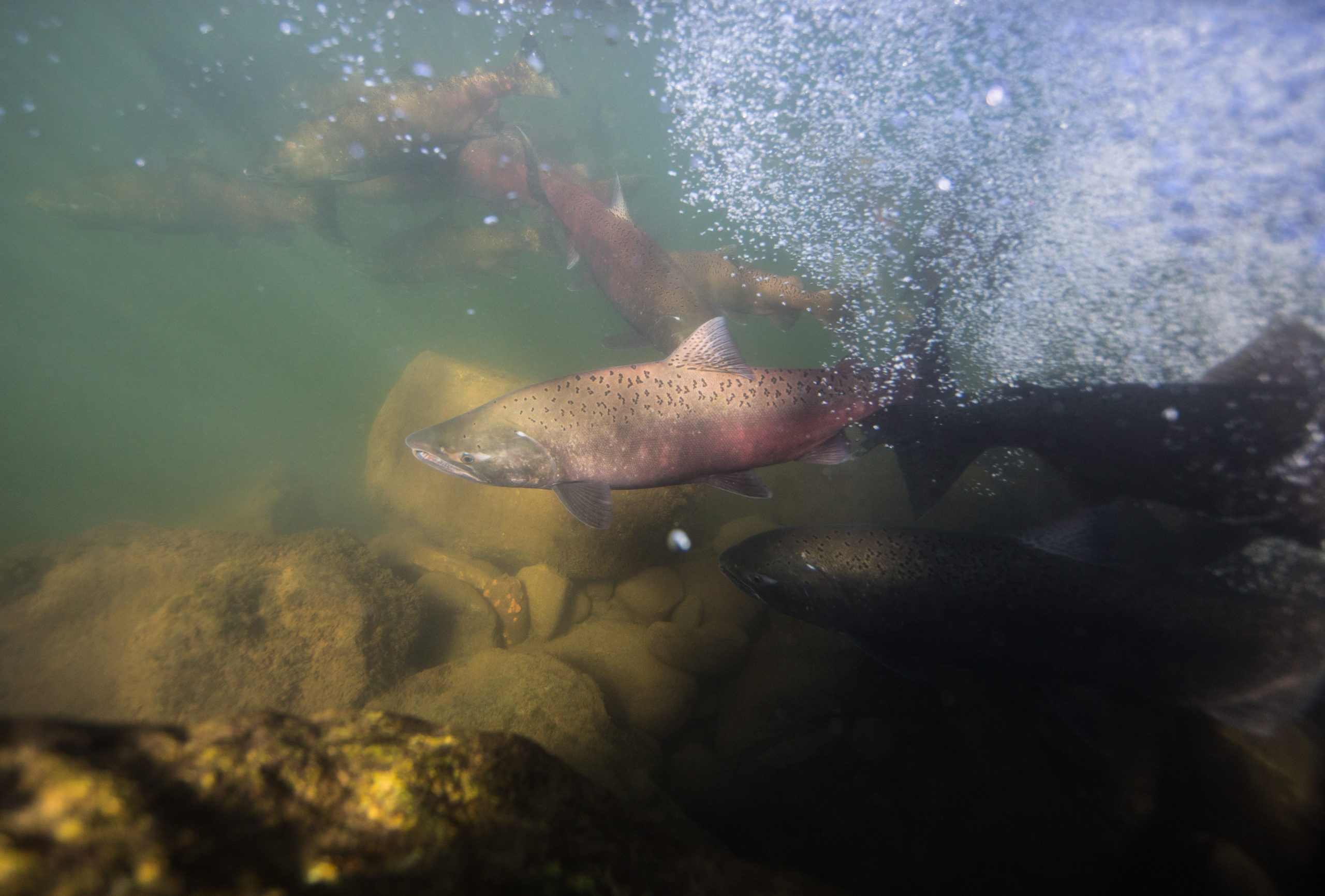Issue
Salmon and other fish in the Sacramento and San Joaquin rivers and their tributaries have lost 90% of their rearing habitats, compared to the landscape 100 years ago. At the same time, the number of salmon in these rivers has fallen dramatically. Historically, over two million Chinook salmon spawned in California’s Central Valley each year. Today, a fraction of that number returns to local rivers.
Dams, levees, and diverted flows have blocked young salmon’s access to cold spawning and summering habitat, food-rich floodplains, and the productive rearing and migration habitat in the Bay-Delta estuary that they need to grow strong enough to reach and survive in the ocean. As fewer salmon reach the Pacific Ocean, more orca whales are dying prematurely, in part from lack of essential food.
Historically, this ecological crisis has sat in the middle of an unproductive cycle of conflict and litigation, even as scientists, farmers, landowners, and anglers agree that one of the only ways to break through and implement solutions is collaboration.
Strategy
Two years ago, Trout Unlimited, California Trout, and American Rivers came together to launch the Central Valley Salmon Habitat Partnership. These partners believed that the pivot towards collaboration necessitates trust among stakeholders, and that trust is built on relationships.
With that in mind, the partnership was designed to incubate, grow, and maintain trust across all the many leaders and organizations that must work together to implement successful fish conservation at the landscape scale in California.
Since then, the Central Valley Salmon Habitat Partnership has brought together conservation groups, water contractors, agricultural interests and state and federal agencies, to jointly identify, fund, and implement salmon restoration projects.
What’s Next
Salmon recovery projects are advancing at a faster and more coordinated pace across the Central Valley. The Central Valley Salmon Habitat Partnership is working on a set of pilot projects, including restoring the Willow Bend Preserve floodplain along the Sacramento River and a San Joaquin River floodplain near Grayson, California. At the same, the partnership is unraveling some of the stuck knots that can delay even widely supported projects for years. This includes more and better collaboration and coordination across public agencies, faster permitting, and a system to facilitate fair compensation for participating landowners.

In Grayson, River Partners, a member of the partnership, will remove the levee on the left side of the photo to reconnect the river to the floodplain. The project will create habitat for young salmon and other species, as well as a walking and running trail for residents, River Partners
